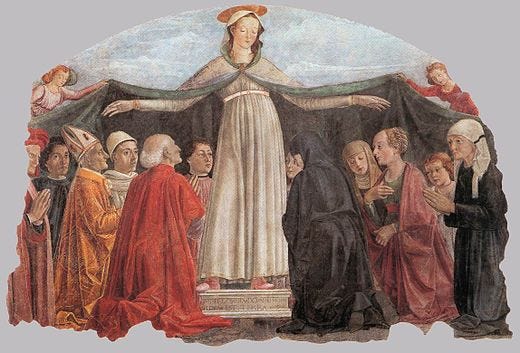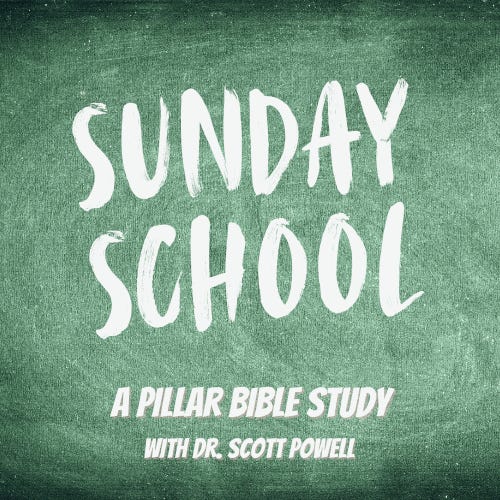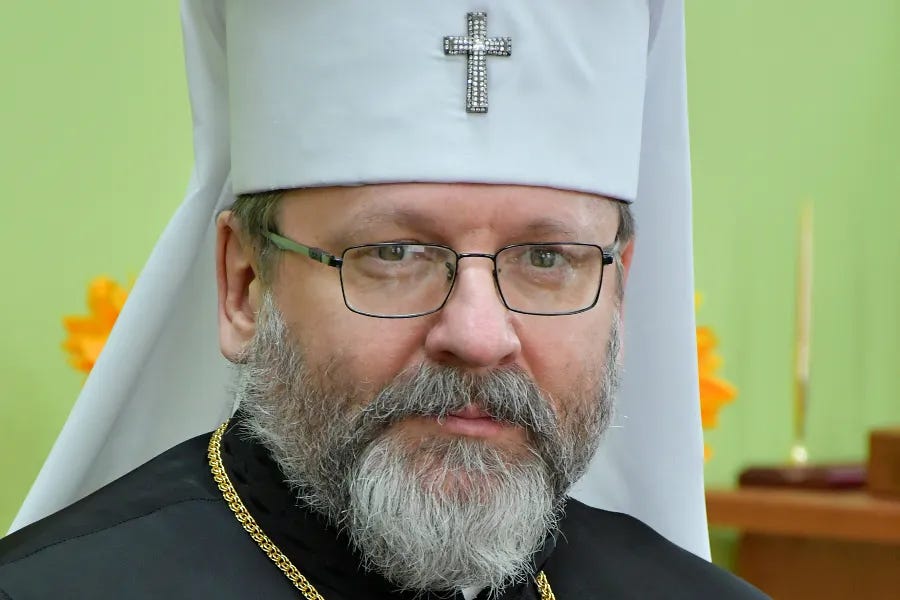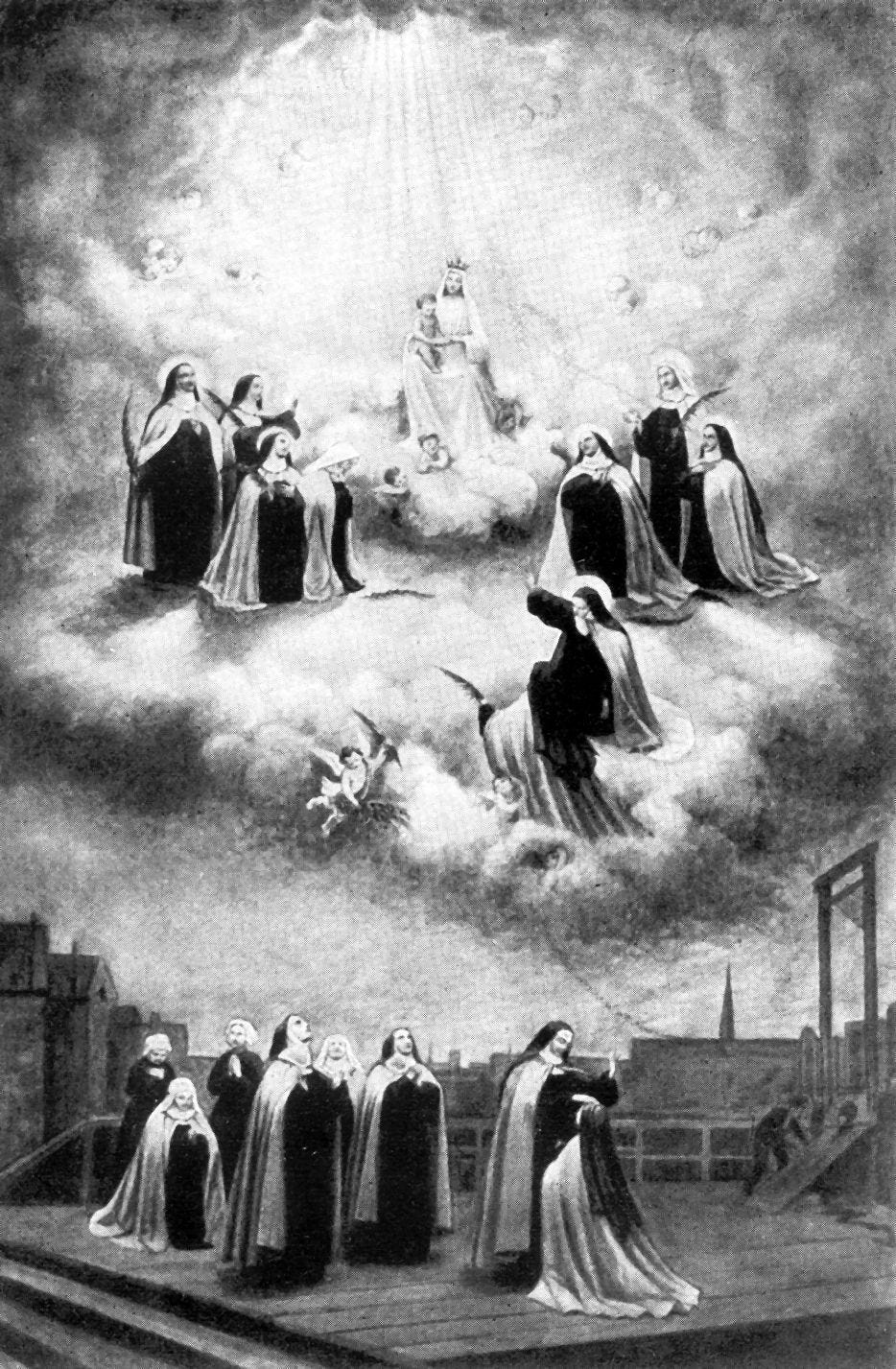Pillar subscribers can listen to JD read this Pillar Post here: The Pillar TL;DR
Hey everybody,
Today is the Feast of Our Lady of Mercy, and you’re reading The Tuesday Pillar Post.
If you’re not familiar with today’s feast, you should know that it was until the post-conciliar period known as the Feast of Our Lady of Ransom — and it commemorated the Mercedarian order, which was founded in the 1200s to ransom Christian captives held by kidnappers in North Africa.
See, it was a pretty common occurrence in medieval southern Europe that Christians would be kidnapped by pirates or mercenaries during skirmishes between Christian Spanish forces and the Moor states of North Africa.
Those kidnapped Christians would be held for ransom, forced into slavery, and sometimes physically tortured until they recanted the Gospel.
In the midst of all that, a military veteran named Peter Nolasco decided he could help. He started praying for kidnapped Christians, and collecting money to pay the ransom for Christians being held for it.
As more men joined him, they founded a religious community in Barcelona — the Order of the Blessed Virgin Mary of Mercy.
Their mission was threefold: to pray for captive Christians, to collect and pay their ransoms whenever possible, and to offer to take the place of Christian who could not be ransomed — even if that meant their certain death.
The ransom missions themselves were often quite dangerous — more than once, Mercedarians would go somewhere in North Africa with money, to pay for ransomed Christians, and then themselves be killed or captured.
In fact, in their first three centuries, almost 100 Mercedarians were killed as they aimed to ransom kidnapped Christians, or to take their places in dank dungeons or desert outposts.
But they rescued hundreds of Christians during that time, facing shipwrecks, piracy, and violence as they did it.
They did all of that under the banner of Our Lady of Ransom. It was extraordinary, life-giving, sacrifice.
To be honest, I don’t know how we’re supposed to imitate those heroic religious. But I am certain that in one way or another, the Lord is calling each one of us to the same kind of radical selflessness that characterized the mission of the Mercedarians.
It’s up to us, in-and-with the Church, to find out what that looks like.
May Our Lady of Ransom intercede for us.
—
The news
According to the new policy: “the use of parish facilities by charter schools, home school programs, or private school programs is prohibited, both because such usage can undermine the stability of nearby Catholic schools and lead people to think that the Church is approving and advancing particular alternative schools and programs.”
And while the Church customarily, and frequently, affirms that parents are the primary educators of their children, the San Diego diocesan policy takes a different tack, claiming that:
“Parish run schools and religious education programs are the primary means by which the Church accomplishes its teaching mission for children and young people,”
As it happens, CARA — Georgetown’s Catholic research center — reported that 10% of last year’s new priests were homeschooled, even while homeschoolers make up far less than 10% of the Catholic population. According to CARA, if trends continue, homeschoolers will constitute 13% of priestly ordinands by 2028.
Anywho, this reporting is important, and you’ll only read about it at The Pillar, which broke the story last night.
The video has raised some questions — about what scapulars are, and about who can wear ‘em.
And don’t worry. When there are questions, The Pillar has answers.
At the heart of that change are two bishops: Cardinal José Cobo and Bishop José Antonio Satué.
In a very well-reported analysis, The Pillar’s Edgar Beltran explains who they are, what their appointments represent, and what that could mean for the Church across Spain, and across Europe.
If you want to understand European episcopal politics — and really, who doesn’t? — read this.
The theme of the trip is supposed to point to the future for Belgian Catholics — but right now, the Church in Belgium is busy digging out the Augean stable of its past — as the country is facing anger over high-level abuse scandals rife with unanswered questions.
So what does that mean for the trip? Well, according to Luke Coppen, expectations are fairly low in Belgium for the pontifical visit.
“The economic resources at the service of the [Holy See’s] mission are limited and must be managed with rigor and seriousness,” Pope Francis wrote to cardinals last week.
Well, yeah. Pillar readers have known that for quite a while, haven’t we?
But we also know that “rigor and seriousness” have been inconsistently applied to the management of those resources, even while financial alarm bells are tolling.
The pope’s memo last week seems to suggest that the pontiff is ready to push hard on the four-alarm fire of the Vatican’s serious cash crunch — with the pope even suggesting that some Vatican offices and dicasteries might not be able to stay open for very long.
But if the pope is getting serious about reining in the spending, does it matter? Or is it all too little, and too late?
Here’s an analysis from Ed Condon.
—
If you went to the National Eucharistic Congress — and a lot of you did — you know that it might well be a watershed moment for the Church in the United States.
I’ve said before that the Congress’ focus on liturgy first — worshiping God together — could meaningfully change a lot of trends in evangelization and catechesis, especially if parishes decide to take up processions and holy hours as genuinely evangelistic prospects.
Whether you went, or you didn’t, you know that the Congress wasn’t perfect — and The Pillar covered meaningfully some of the challenges that organizers faced, including initial pushback on costs, and their efforts to make the Congress less expensive to put on, and less expensive to attend.
But whatever you know of the Congress, the person with the best view of the whole thing was Congress CEO Tim Glemkowski. While he’s since left the National Eucharistic Congress for a new job, Glemkowski continues to get questions, just about every day, about what lessons the Church can learn, and whether the Congress’ successes can be “replicated” or “scaled.”
For The Pillar, Glemkowski agreed last week to answer just one question, the one he gets the most often — “Why did the National Eucharistic Congress work?”
But Glemkowski answered that question very thoroughly, and you should read what he has to say. For anyone in pastoral or apostolic ministry, the guy’s got a lot for you to consider.
Here’s an excerpt:
“The temptation throughout planning something like this is to just execute a Big Catholic Event™. With our programming team, we tried to make the entire pedagogical thrust of the Congress about the worship of God. An encounter with the living God that would actually change minds and hearts.
This would seem obvious, perhaps, to many, but, leaders in the Church can attest, that kind of Christocentricity is easier said than done. It is really easy to get distracted by what priorities different stakeholders —often themselves Important People™ — want.
It takes a lot of discipline to keep a simple focus on Jesus.”
Here’s another:
“It is no use hiding that the last 20 years of scandals in the institutional church has led to a latent broken trust. The often-intractable dysfunction that persists in so many of those institutions can cause many well-intentioned lay people to despair when they encounter it. I remember one corporate executive who came to work for the Church telling me that she had never encountered as much nastiness in corporate America as she had working for the Church and, furthermore, if her organization had operated the way the Church did it would have closed decades before. That squares with my experience, for sure.
One of the fashionable responses, though, recently is for lay leaders desirous of renewal to try to work around, or eschew altogether, the place of the hierarchy in their efforts. I think this is a mistake. Working closely with the institution requires one to learn a kind of patience and long-suffering, but, as we saw at the Congress, it is worth it. When the bishops truly lead, in college and individually, there is something different.”
—
Drive-by commentary
It was just a month ago that we were joking in The Pillar’s group text about the slow, slow news season of late August — and whether we’d have enough news to keep our readers coming back.
Well, that’s over. As we move into the autumn, news is coming fast, with The Pillar breaking a lot of big stories over the past few weeks, and with more to come.
So rather than write a few hundred words about one of several Catholic news topics, I thought I’d give you a few very short drive-by commentaries on the news du jour, and then a palate cleanser.
Kamala Harris skips Al Smith Dinner: We shouldn’t be surprised that a big, brassy, black-tie New York Catholic fundraiser no longer feels relevant to a lot of politicians. That’s not how they wanted to be branded, and there is not actually a discernible “Catholic vote” to court anyway. But we should use this moment to ask ourselves whether playing the affable “neutral zone” for presidential candidates is actually an effective Catholic witness of anything. And we should consider instead pivoting to something which actually proclaims the kerygma.
Catholics push back on pending execution of Marcellus Williams: Good. We should push back on the unnecessary use of the death penalty in the United States. Most especially when there are real doubts about someone’s guilt.
Cardinal Pizzaballa says peace in the Middle East is achievable. Well, let’s pray seriously for that. Especially as things escalate.
Pope Francis names controversial theologian Fr. Maurizio Chiodi — praised by LGBT advocates and “flexible” on contraception — as a consultor to the Dicastery for the Doctrine of the Faith: Color me surprised. Not really. We’ve been cataloging this fellow’s Vatican ascendency for the past couple of years. And we’ve reported that the Pontifical Academy for Life (where Chiodi also has a desk) has been working to prep the ground for some kind of "contextualizing" of the Church's teaching on sex and marriage. The priest’s new role could seem to suggest that work is now cross-pollinating across the Vatican. So stay tuned.
Brooklyn priest subpoenaed as part of massive NYC corruption probe: 😳
So with all that said, just watch this for a minute:
Then enjoy this one:
Please be assured of our prayers, and please pray for us. We need it.
Yours in Christ,
JD Flynn
editor-in-chief
The Pillar





